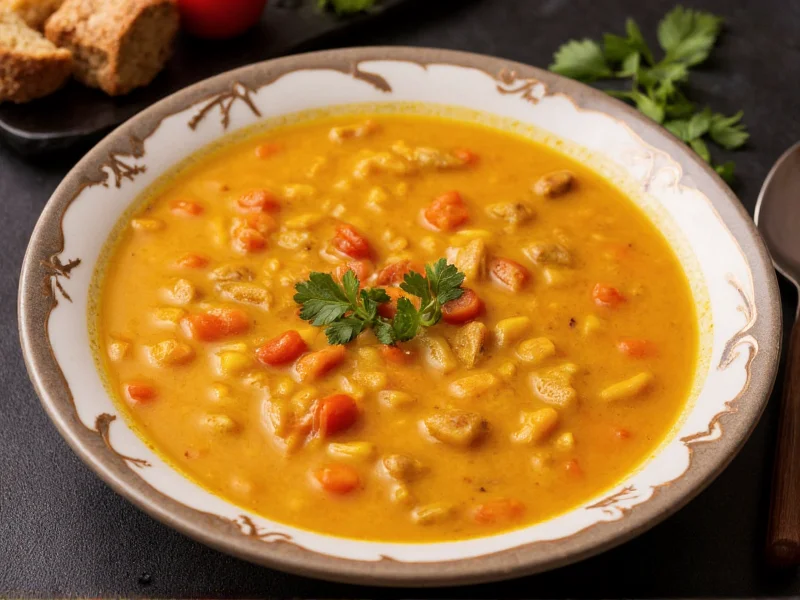Many shoppers searching for “raos soup” are actually looking for ways to incorporate Rao's famous sauces into comforting soup recipes. This confusion makes sense given Rao's reputation for high-quality Italian food products, but it's important to clarify that Rao's Homemade specializes in pasta sauces, salad dressings, and frozen entrees—not canned soups.
Understanding the Rao's Soup Misconception
The “raos soup” search query represents a classic case of mistaken product categorization. Rao's Restaurant, established in 1896 in New York City's Little Italy, became famous for its Italian-American cuisine. When the Rao's Homemade sauce line launched in 1992, it quickly gained popularity for its authentic taste and simple ingredients. Consumers naturally began experimenting with these versatile sauces in various applications, including as soup bases.
Food enthusiasts searching for “best Rao's soup recipes” or “Rao's marinara soup ideas” typically want to recreate restaurant-quality Italian soups at home using products they already trust. This represents a “Do Query” in search terminology—users want actionable instructions rather than just product information.
How Rao's Sauces Elevate Homemade Soups
While Rao's doesn't produce dedicated soups, their sauces serve as excellent foundations for several traditional Italian soup varieties. The brand's commitment to simple ingredients (tomatoes, olive oil, garlic, and herbs with no added sugar) makes their products particularly suitable for soup preparation.
| Rao's Sauce Variety | Best Soup Applications | Recommended Additions |
|---|---|---|
| Marinara | Minestrone, Pasta e Fagioli | Cannellini beans, escarole, ditalini pasta |
| Arrabbiata | Spicy tomato soup, Cioppino | Shrimp, clams, red pepper flakes |
| Vodka Sauce | Creamy tomato soup, Seafood stew | Heavy cream, shrimp, basil |
| Roasted Garlic | White bean soup, Vegetable soup | Cannellini beans, kale, Parmesan rind |
Three Simple Soup Recipes Using Rao's Sauces
1. Quick Minestrone with Rao's Marinara
This 25-minute minestrone recipe transforms Rao's marinara into a hearty soup perfect for weeknight dinners. The secret lies in building layers of flavor while maintaining the sauce's authentic character.
Ingredients:
- 1 jar (24 oz) Rao's marinara sauce
- 3 cups vegetable broth
- 1 (15 oz) can cannellini beans, drained
- 1 cup small pasta (ditalini or elbow)
- 2 cups chopped escarole or spinach
- 1 tablespoon olive oil
- 1 small onion, finely diced
- Parmesan cheese for serving
Instructions:
- Sauté onion in olive oil until translucent
- Add marinara sauce and broth, bring to simmer
- Cook pasta directly in the sauce mixture for 8-10 minutes
- Add beans and greens, cook 5 more minutes
- Season with salt, pepper, and red pepper flakes to taste
2. Creamy Tomato Basil Soup with Rao's Vodka Sauce
This elevated tomato soup uses Rao's vodka sauce as its base, creating a restaurant-quality result with minimal effort. The vodka sauce's creaminess eliminates the need for additional dairy while providing rich flavor.
Preparation time: 20 minutes | Servings: 4
Combine one jar of Rao's vodka sauce with 1 cup vegetable broth in a saucepan. Heat gently without boiling. Stir in 2 tablespoons heavy cream (optional) and 1/4 cup fresh basil. For added protein, include cooked shrimp or shredded chicken. Serve with crusty bread for a complete meal that showcases how “Rao's sauce soup recipes” can deliver impressive results.
Finding Rao's Products for Soup Making
Rao's sauces are widely available at major grocery chains including Whole Foods, Kroger, Target, and Walmart. When searching for “where to buy Rao's soup products,” remember you'll find their sauces in the pasta aisle rather than the soup section.
For specialty varieties like the Roasted Garlic or Arrabbiata that work particularly well in soups, check the international foods section. Online retailers like Amazon and Instacart also carry the full Rao's product line, making it easy to find “Rao's marinara for soup” regardless of your location.
Why Rao's Works Well in Soups
The reason Rao's sauces excel as soup bases comes down to their formulation. Unlike many commercial sauces, Rao's contains no added sugar, preservatives, or artificial ingredients. This clean ingredient profile allows the natural tomato flavor to shine through when diluted with broth for soups.
Food scientists note that Rao's specific tomato variety and slow-cooking process creates a rich umami base that forms the perfect foundation for soups. When developing “homemade soup with Rao's marinara,” the sauce's balanced acidity and natural sweetness eliminate the need for additional flavor enhancers.
Final Thoughts on Rao's and Soup Preparation
Understanding that Rao's doesn't make soup products but rather versatile sauces that enhance homemade soups resolves the confusion behind “raos soup” searches. By leveraging Rao's clean ingredient profile and authentic flavors, home cooks can create restaurant-quality Italian soups with minimal effort.
When searching for “Rao's soup recipes,” focus on recipes specifically designed to incorporate their sauces as foundational elements. This approach delivers the rich, authentic Italian flavors consumers seek while working within the actual product offerings of the Rao's brand.











 浙公网安备
33010002000092号
浙公网安备
33010002000092号 浙B2-20120091-4
浙B2-20120091-4